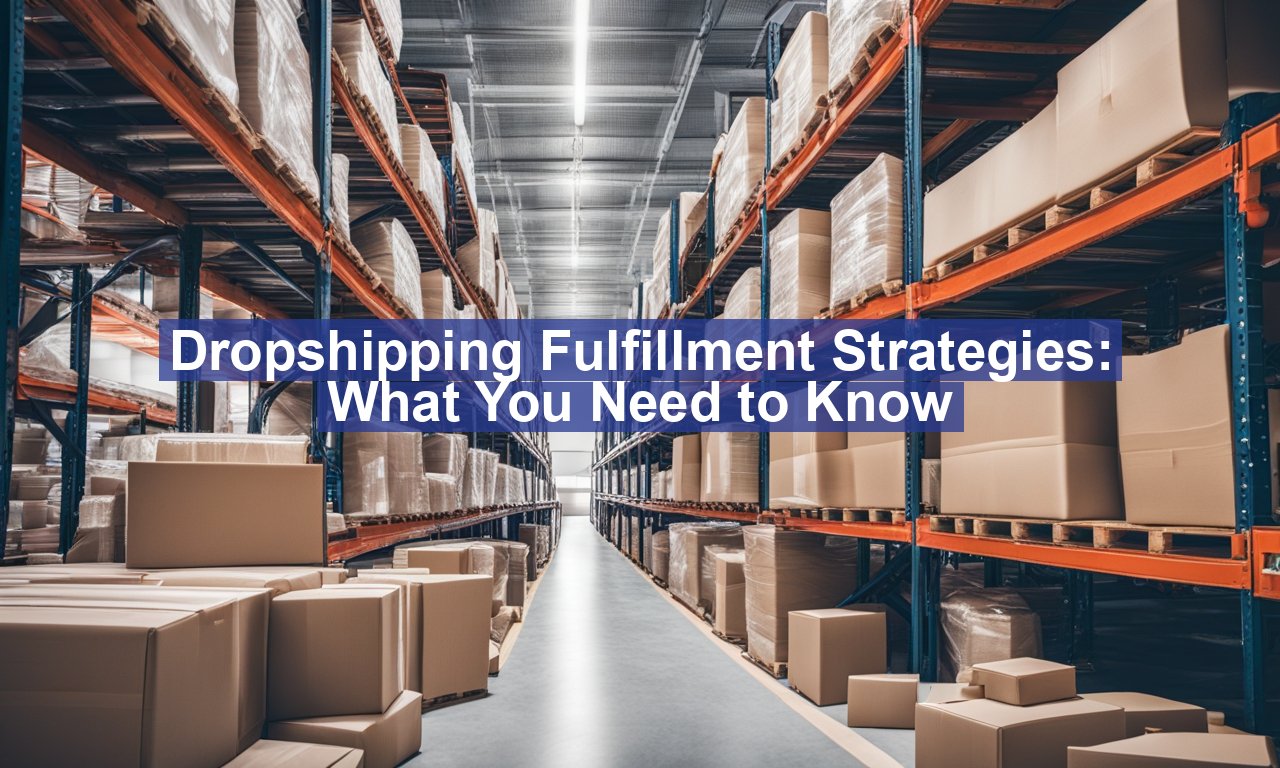Dropshipping fulfillment strategies: What you need to know, in today’s fast-paced e-commerce world, where competition is fierce and customers demand near-instant gratification, mastering effective dropshipping fulfillment strategies can make or break your online business. Whether you’re just starting or looking to fine-tune your existing operations, understanding the nuances of dropshipping fulfillment is crucial. Not only will it enhance customer satisfaction, but it could also be the key to scaling your business efficiently.
So, let’s dive deep into what you really need to know about dropshipping fulfillment strategies, with practical insights and expert advice to ensure you’re on the right path.
Understanding Dropshipping Fulfillment Strategies: What You Need to Know
The essence of dropshipping lies in its simplicity: you sell products, and third-party suppliers handle the logistics. But don’t be fooled by this seemingly straightforward process. The real challenge is in maintaining a seamless fulfillment strategy to keep your customers happy and your business thriving.
Efficiency is Key
Efficiency matters when it comes to dropshipping, especially since you don’t own or store the products yourself. To ensure that your fulfillment process is top-notch:
- Communicate Effectively with Suppliers: Establish clear procedures and maintain open lines of communication. This helps in avoiding misunderstandings which can lead to delays or errors in order fulfillment.
- Choose Reliable Suppliers: Vet suppliers thoroughly before partnering. Check for their track record on delivery times and quality control. Third-party reviews and industry feedback can be incredibly insightful. Websites like Shopify often provide valuable lists of reliable suppliers.
Integrate Technology into Your Fulfillment Process
Harnessing the power of technology can significantly streamline your fulfillment process, boosting productivity and improving accuracy.
- Use Automation Tools
Consider using automation tools to manage orders, keep track of inventory, and handle customer queries. Tools like Oberlo and Spocket can automatically sync orders between your store and suppliers, reducing manual workload and minimizing human error. - Leverage CRM Systems
Customer Relationship Management (CRM) tools are crucial. They help you manage customer data and interactions efficiently. By centralizing this data, you can offer a personalized shopping experience, which is essential for customer retention in the competitive e-commerce landscape.
Balancing Shipping Times and Costs
The distance between your supplier and the customer significantly impacts shipping times and costs, a critical aspect to consider in your fulfillment strategy.
- Offer Multiple Shipping Options
Providing a difference of shipping options caters to various customer preferences. Some may prefer to pay a premium for faster delivery, while others may opt for more economical options. This flexibility can improve customer satisfaction significantly. - Work with Local Suppliers
Whenever possible, partner with suppliers closer to your target markets. This can vastly reduce shipping times & costs. Remember, shorter shipping often leads to happier customers and higher sales conversions. For insights on local supplier selection, check out this detailed guide on Oberlo.
Streamlining Inventory Management
While you aren’t directly handling inventory in dropshipping, you still need effective management to avoid pitfalls like stockouts.
- Sync Inventory Information
Regularly syncing with your suppliers on inventory levels is crucial. Knowing your supplier’s inventory in real-time allows you to update your store accordingly. This prevents issues like overselling and helps maintain customer trust. - Monitor Trends and Forecast Demand
Being proactive about product demand is vital. Use analytics tools to monitor sales trends and predict future demands. This information can guide you in choosing popular items and even planning for peak seasons.
Providing Outstanding Customer Service
Customer service is the cornerstone of e-commerce success. Even with a perfect fulfillment process, things can go wrong. How you handle these situations impacts your reputation and customer loyalty.
- Implement a Clear Returns Policy
Create a straightforward, customer-friendly returns policy. Make sure it’s visible & easy to understand on your website. This transparency can reassure potential buyers and encourage them to make purchases without hesitation. - Be Proactive in Communication
Keep customers aware at every stage of the order process, from confirmation to delivery. If there are any issues, address them speedily. A simple email update or a message can go a long way in maintaining customer confidence.
Scale Gradually and Sustainably
Although scaling fast might seem tempting, it’s wiser to grow sustainably. Expand your product lines or enter new markets gradually, ensuring that your fulfillment processes can handle the increased demand without compromising service quality.
Test New Strategies
Continuously test new fulfillment strategies or tools to see what works best for your business model. Stay informed about trends and best practices by connecting with e-commerce communities or forums where successful sellers share strategies.
Conclusion
Dropshipping fulfillment strategies: What you need to know is far more than just sending an item from point A to point B. It’s about optimizing relationships, streamlining processes, and most importantly, delivering an outstanding customer experience. By following these strategies, you’re on your way to creating a successful and sustainable dropshipping business. For more detailed guidance, explore this comprehensive resource on BigCommerce, which offers further insights into dropshipping strategies.


